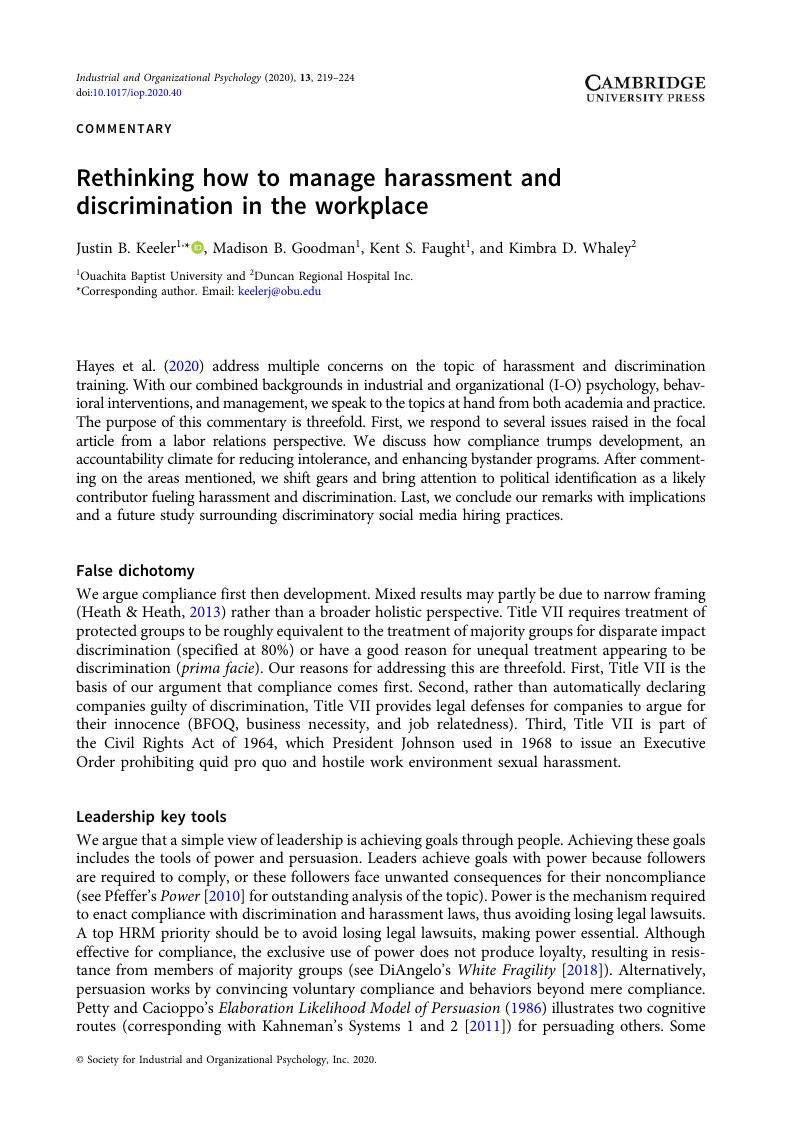Kelly, M., &
Wilkinson, L. (
2018). Implementing the green dot bystander intervention program to promote respectful workplaces in the construction trades in Oregon. NITC-RR1078. Portland, OR: Transportation Research and Education Center (TREC). doi:
10.15760/trec.206CrossRefGoogle Scholar 